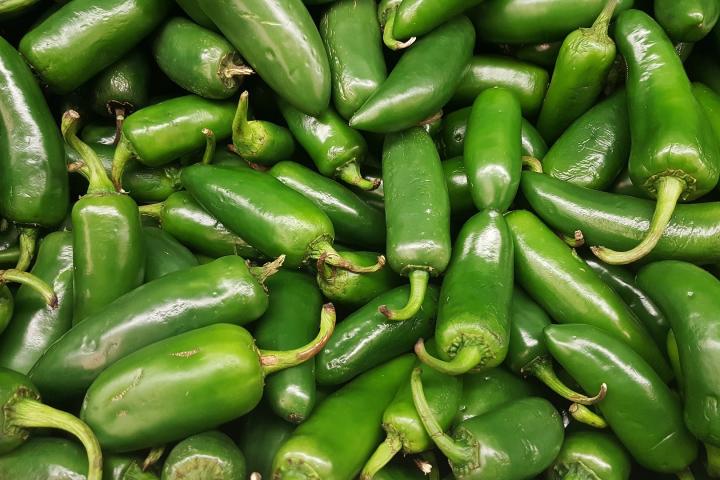
The more corking (tiny brown lines) on the jalapeño, the hotter it is!
Also receive the Almanac Daily newsletter including gardening tips, weather, astronomical events, and more.
Planting, Growing, and Harvesting Jalapeño Peppers
Cooking Notes
- Be cautious when handling jalapeño peppers; wear gloves and don’t touch your eyes!
- The oil that gives hot peppers their kick is called capsaicin. It is most concentrated in the white membranes and seeds inside the fruit.
ADVERTISEMENT
My jalapeño plant is growing great, only thing is my peppers are really small what can I do to help with the size? Can anyone help with this?
Hi Karen,
There are a number of reasons why your jalapeno plant is producing small fruit. If your plants are overwatered or overfertilized or do not receive enough direct sun it can also lead to smaller peppers. Jalapenos love hot and sunny conditions and depending on when you started your plants and your location, they may not have received enough time to mature. If sunlight is the issue, if possible, move to a more sunny location to see if that will cause them to increase in size.
Some also recommend removing flowers and early fruits during the first few weeks of outdoor growth to allow your plant to focus on establishing roots, which will lead to larger peppers later in the season.
I grow hot peppers and I think I am the only gardener in Ontario Canada that grows New Mexico peppers also. I make my own Chili Powder, I use Habanero and Serrano Peppers that I grow, and then use my food Dehydrator to dry them out and coffee mil to turn it to dust, then mix other spices in and when I make chili, I always dump my chili powder on the raw meat and cook it with the meat.
What a great idea!
This is a very good article. Thank you!! Lots of great tips. Blessings to you!!
Peppers are Green during their "Technical ripeness" appropriate for industrial / Kitchen use; and Red at "Biological ripeness"!!
Ben, you advocate misting for mites. How about liquid Sevin?
I wouldn't use Sevin on food plants, but your garden, your rules.
I almost never use a pesticide, just encourage a rich ecosystem so the spiders, lizards, and insects will handle the pests. Some years pests destroy one type of plant but the next year that pest recedes. That's how my vegetable garden has worked well for me for over 10 years. I consider that acceptable, but maybe you wouldn't. When I've had mites, it didn't kill anything outright, it just stressed the plants. After I sprayed with a strong jet of water a couple of times, the mites receded to unproblematic levels.
I wouldn't use Liquid Seven unless you have a very nasty infestation. Try diatomacious earth (DE). You will have to reapply it after every rain but by the time of year you get mites, there's very little rain. You can research more online or youtube.
Blessings!










